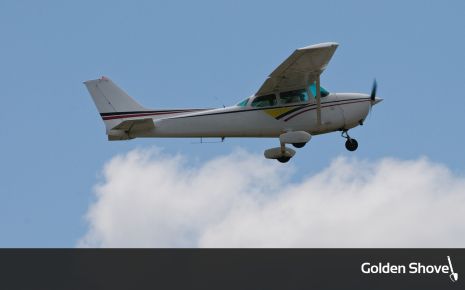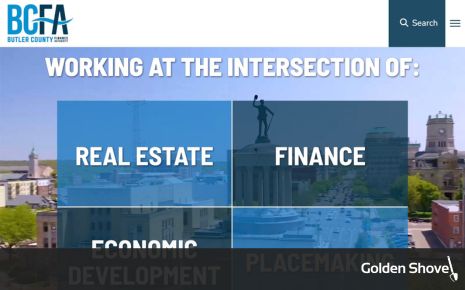Navigating the Skyways: Exploring Federal Funding for Local Airports

19 Aug 2024
News, Aerospace & Aviation
Federal funding is available to help preserve, expand, and upgrade local airport facilities. “From Runways to Revenue: Economic Benefits of Your Local Airport” provides key information and tips on how to secure this funding. Before downloading, here is an overview of what you need to know.
Federal Funding for Airports: Part 49 of the US Code of Federal Regulations
Part 49 of the US Code of Federal Regulations requires this plan to identify the amounts and types of airport development eligible for Federal funding under the Airport Improvement Plan (AIP) and Bipartisan Infrastructure Law (BIL). Understanding the application process and timelines is critical for communities wishing to expand or renovate their current airport.
Forecasted traffic, the use and age of facilities, and changing technology determine an airport's capital needs. Federal funding covers many of these needs, but supplemental funding sources also provide options for local airports. In addition to the AIM and BIL funds, airports can tap into Passenger Facility Charges (PFC), state and local grants or bonds, airport revenue, municipal financing, or local tax revenue.
Federal funding in the form of grants contributes to about 10 percent of funding for the nation’s largest airports. These airports generally have a local revenue stream with fees and taxes. For the roughly 3,200 other airports in the national airport system, funding comes from a variety of sources, including the National Plan of Integrated Airport Systems (NPIAS), Airport Improvement Program (AIP), state governments, local general fund allocations, tax-exempt bonds or borrowing for major capital projects.
Match Your Request with Established Funding Priorities
The currently published NPIAS has adopted six strategic goals from the FAA and DOT. The six focus areas are safety, capacity, environmental performance, runway pavement conditions, surface transportation accessibility, and airport financial performance. Economic developers and community leaders should understand each of these areas and how the airport can be improved in one or more of them. Matching funding requests to these focus areas will improve the chances of success.
The National Plan of Integrated Airport Systems (NPIAS) for FY 2023-2027, mandated by 49 U.S.C. § 47103, outlines the development of public-use airports in the US, including costs and types of eligible airport development. This plan encompasses various types of airports, including those for fixed-wing aircraft, helicopters, and seaplanes. It identifies the development eligible for Federal funding under the Airport Improvement Program (AIP) and the Infrastructure Investment and Jobs Act, also known as the Bipartisan Infrastructure Law (BIL). The BIL introduces grants for airport terminal projects, on-airport rail access, and air traffic control towers, which traditionally received minimal AIP funding.
Airport capital development needs are influenced by traffic forecasts, facility usage and age, and evolving aircraft technology, necessitating updates or replacements in equipment and infrastructure. These developments are identified through the airport capital planning process and included in the NPIAS. While many projects are eligible for federal funding, they can also receive financial support from other sources like Passenger Facility Charges, state/local grants, or airport revenue.
The Airport Improvement Program (AIP) offers grants to public agencies, and in some cases to private owners and entities, for the planning and development of public-use airports included in the National Plan of Integrated Airport Systems (NPIAS). The grant coverage varies: for large and medium primary hub airports, it's 75% of eligible costs (80% for noise program implementation), and for small primary, reliever, and general aviation airports, it's 90-95% based on statutory requirements.
The FAA categorizes airports within the NPIAS based on various data, including aviation activity, ownership, and public service functions. Commercial service airports, defined as public airports with over 2,500 enplanements per year are updated annually, while others are updated biennially. Development cost estimates are primarily sourced from airport sponsors through local planning documents and are focused on projects eligible for federal funding. The current NPIAS reflects development based on documents and information available up to March 2022.
Eligible airports for AIP grants include those that are publicly owned, privately owned but designated by the FAA as relievers, or privately owned with scheduled service and at least 2,500 annual enplanements. To qualify for a grant, an airport must be part of the NPIAS, which is updated every two years and identifies key public-use airports for public transportation, civil aviation, national defense, and the Postal service.
Grant recipients, known as "sponsors," must be capable of fulfilling the obligations and assurances in the grant agreement. Eligible projects generally relate to airport safety, capacity, security, and environmental concerns and can include airfield improvements, terminals, hangars, and certain professional services. However, operational costs and projects not meeting Federal environmental and procurement requirements are ineligible.
For specific details about eligible and ineligible projects, consult the appropriate Regional Airports Office.
Learn More About Airport Funding Opportunities
Download “From Runways to Revenue: Economic Benefits of Your Local Airport” to learn more about ways to secure federal funding for your airport and to read case studies from communities that have done exactly that.
More Topics





